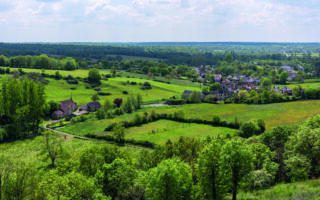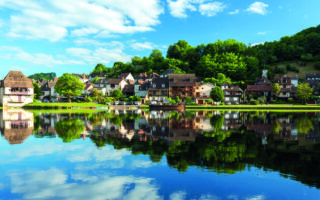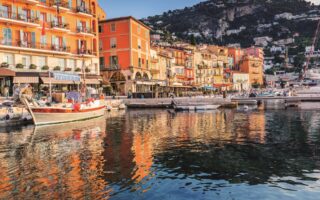Buying a Home in Brittany

Annaliza Davis reveals why this idyllic area of France, which is a just a short hop across the Channel, is such a hit with overseas property buyers and visitors alike…
Justly famous for its coast, richly verdant countryside, history and heritage, Brittany exudes a distinct personality. There’s always plenty of space, the sky seems to stretch forever, the sea is a clear turquoise and the fields overflow with produce. Whether you want to get away from it all or settle down and make connections, Brittany has so much to offer.
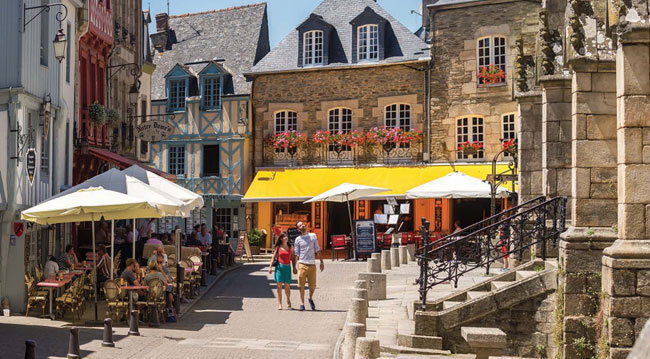
LOCATING BRITTANY
This is one of the few French regions that most British people can point directly to on a map – as it’s just over the Channel, roughly opposite Devon and Cornwall.
Known as ‘La Bretagne’, this region boasts over 1,500 miles of coastline, countless beaches and vast unspoilt landscapes so it’s always popular for holiday homes. Brittany’s proximity to the UK also makes it a sound choice for relocating, as popping back is simple, and friends and family can easily come to visit.
“We’re on the south-west coast, less than two hours from Roscoff and an hour from Brest,” says Ann Edwards, who retired to the region in 2004. “It’s easy to get back to see my grandchildren, and when people visit, it’s great to share the simple pleasures of our seaside cafes and local markets.”
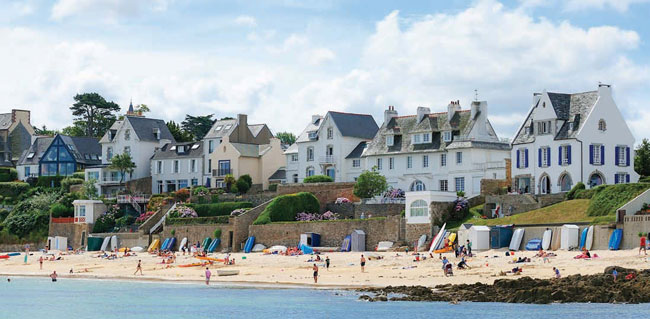
SETTING THE SCENE
Brittany may not have ski resorts or year-round sunshine, but it possesses character, countryside and coastline aplenty, and you can buy a lot of property for your money. The region’s major cities are Rennes with over 200,000 inhabitants, followed by Brest (141,000), Quimper (63,000), Lorient (57,000) and Vannes (53,000). All of these cities boasts international offices, vast shopping malls and bustling city centres.
Brittany’s Four Départements
Brittany consists of four départements – firstly, on the far West, you have Finistère (number 29), which is famous for its sandy beaches, clear waters and surfing, so it’s often likened to Cornwall. The Côtes d’Armor (22) is best-known for its Pink Granite Coast and rolling countryside while, moving inland and to the South, there’s Morbihan (56), which is less explored by the British but is a confirmed favourite with the French. Finally, further East, there’s the Ille-et-Vilaine (35), which is mostly land-locked but features a small stretch of coast either side of Saint-Malo.
Regional Character
The region offers a slower pace of life that’s far less commercially-based than many parts of France. Indeed, in some sleepier, rural parts of the Brittany it’s like stepping back in time, to a land where shops close on Sundays and even Mondays, housewives wear tabards to sweep their doorsteps and locals fetch a fresh baguette before each meal.
Geographically on a limb and historically separate from the rest of mainland France, the region’s considerable cultural identity is rather island-like. Its Celtic roots and legends are similar to Wales, Ireland and Scotland, and the Breton language has enjoyed a widespread resurgence over recent years.
Historically, Bretons are farmers and fishermen – which are still key industries in the region – and that makes them robust and resilient. La famille is important to Bretons, so you’ll often see families taking leisurely walks on Sunday afternoons, and they always make time to enjoy meals together. Interestingly, even those Bretons who seek their fortune in large cities or overseas seem to return to the region, often when they have families or retire.
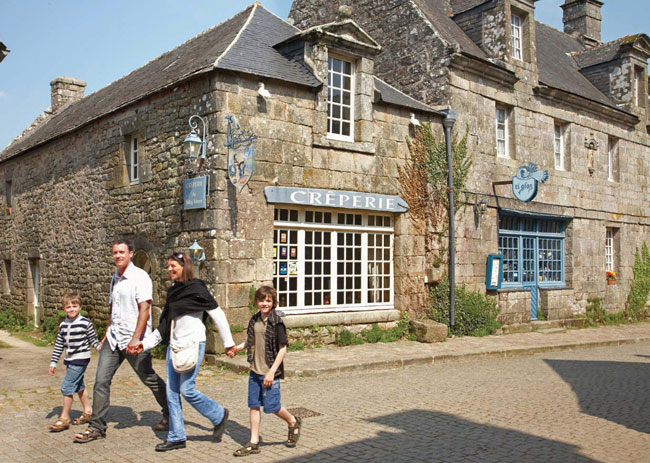
BRITTANY FOOD & DRINK
FROM CRÊPES TO SEAFOOD & SWEET TREATS
The star of Breton cuisine is the paper-thin crêpe, or the savoury buckwheat version, a galette de blé noir, washed down with a bolée de cidre – the complète version, with ham, egg and cheese is quite filling! Brittany’s farms are renowned for their produce, notably ‘Roscoff Pink Onions’ and the artichokes from the north-west. Pork is a regional favourite but local seafood, which includes mussels, oysters, lobster and langoustine is unbeatable. The sweet-toothed will love Kouign-Amann, a caramelised concoction of flaky dough, butter and sugar, or guilt-free strawberries from Plougastel.
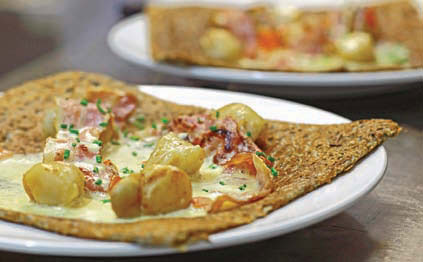
Isn’t the Loire-Atlantique part of Brittany?
When France reorganised its administrative zones in January 2016, the Loire-Atlantique (region 44) and its capital, Nantes, weren’t included as part of Brittany. Historically, Nantes was capital of the Duchy of Brittany so it’s an age-old, controversial question so, emotionally, many French people feel strongly that ‘44’ will always belong with Brittany.
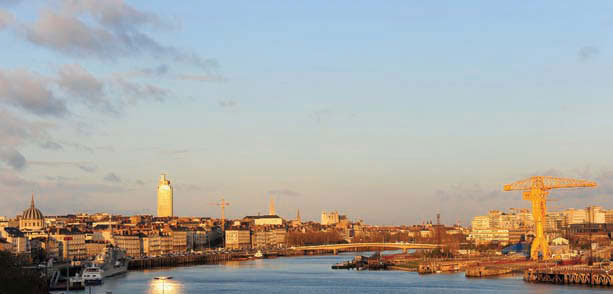
A MILD CLIMATE
Bordered by the Channel to the North and the Atlantic to the South, Brittany enjoys a mild, maritime climate. Brittany receives a little less rain than England’s West Country, and the winters tend to be grey and wet, rather than cold – indeed, the coastal areas hardly get frost at all.
Summers rarely reach scorching temperatures, and many South of France residents keep holiday homes in Brittany for precisely that reason. July and August are the warmest but coastal breezes keep beach-days pleasant.
Finally, every village and town will tell you that their home boasts its own ‘micro-climat’ and claim that it remains sunny even when it’s raining everywhere else. Check the facts on local rainfall and sunshine hours!
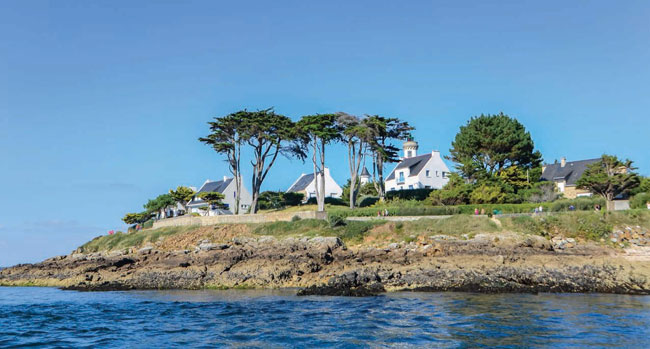
GETTING THERE
There are various cross-Channel options, such as Brittany Ferries (Plymouth, Portsmouth and Cork to Roscoff or Saint-Malo) or Condor Ferries (Poole and Weymouth to Saint-Malo), and you can also use the ferry ports in neighbouring Normandy (Cherbourg, Caen and Le Havre). The region’s airports are Rennes–Saint-Jacques, Quimper –Cornouaille, Lorient Bretagne Sud, Brest Bretagne and Dinard Bretagne, with low-cost airlines operating from the latter two. Just over the border into the Loire-Atlantique département lies Nantes Atlantique Airport, which is convenient if you’re travelling to southern Brittany.
The region’s high-speed rail links with Paris are fantastic, and the capital’s just two hours from Rennes or four when travelling from Quimper. There are two main Autoroutes (the A81 and A84) leading into Brittany, where there are no toll roads and hardly ever any heavy traffic, which is pretty good news for drivers!
What Are the Main Types of Property in Brittany?
There’s an increasing diversity of properties, as local councils are now approving more innovative contemporary building projects, but the main, traditional buildings are:
The Breton ‘Longère’
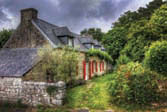
Neo-Breton House
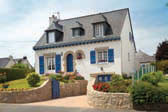
Fisherman’s Cottage
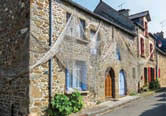
The ‘Chaumière’
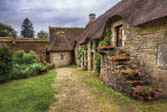
PROPERTIES: AN OVERVIEW
Your choice of Breton property depends on how you’ll use your new home – for short breaks, it’ll need to be easily accessible, but for longer stays you can be more flexible.
As you’d expect, houses are generally more expensive closer to the coast or city centres, while rural properties can be surprisingly cheap, even with lots of land. Do, however, be realistic about the costs of land maintenance or renovations, and remember that picturesque listed properties are often subject to building restrictions.
In Brittany, ‘rural’ often means far quieter than in the UK. Quiet, sleepy towns can become practically dormant during the winter months, so if you’re planning to live in the region year-round, assess your own desired level of ‘calm versus activity’. Certain spots, like Saint-Malo, Vannes or Bénodet, receive serious tourist traffic from mid-July to mid-August, but are far from being Cornwall or Devon. If you’re off to the beach, there’s always room and it’s generally free to park, although you probably won’t find a hot dog van. In other words, you don’t necessarily need to avoid ‘tourist hot-spots’ in Brittany as they aren’t like the crowded resorts further South.
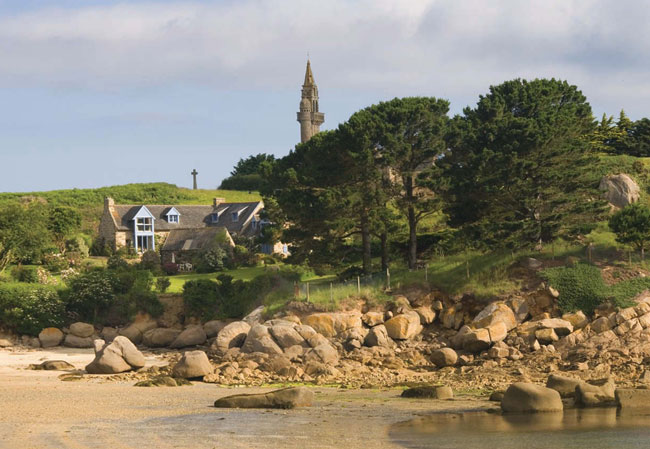
IS BRITTANY FULL OF BRITS?
Although there are some 13,000 British home-owners in Brittany, that represents under 10% of France’s expat population, and is a lower figure less than in Poitou-Charentes, the Aquitaine or the Midi-Pyrénées.
Some areas have high numbers of English-speakers, such as Pontivy and Josselin in central Brittany, which could prove helpful, but wherever you go for, remember that it’s also your choice as to how much you interact with your fellow English residents.
PROPERTIES FOR RENOVATION
With a budget of €50,000, you can certainly find a property to renovate in Brittany. It probably won’t be a detached house ready to move into, but smaller homes can fall into this bracket, as can barns for potential conversion. Focus on rural, inland areas for the best value in this range.
AFFORDABLE FAMILY HOMES
It’s possible to buy a detached family house in good condition for around €150,000, particularly if you’re buying inland. On the coast, you’d need to avoid the more expensive areas in coastal Morbihan – where Parisians like to have weekend homes.
You’ll have a large choice of traditional properties, contemporary buildings, bungalows and Neo-Breton houses in this price-range elsewhere in Brittany.
BUY-TO-LET & HOLIDAY HOMES
Brittany is a great place for buying a house that you can rent out when you’re not using it. The region’s a top choice for British visitors because of its proximity and it’s also very popular with the French, who love its sense of space, sandy beaches, mild summer climate and fresh air.
Top tips for the holiday rental market include opting for properties that are within easy reach of ferry crossings, airports, mainline rail station or major Autoroutes.
In terms of the best type of property to let, choose something with a small garden or terrace that won’t require too much maintenance between visits, which could have an impact upon any rental income as you’d need to employ locals to do the work.
A property with outside space is always a major draw for guests, but instead of a property with a garden or courtyard, you could always consider looking for an apartment that has a decent-sized balcony.
Alternatively, if you’re making a permanent move, find a property with outbuildings to renovate or choose to purchase an existing gîte business in a popular area.
Do you feel that Brittany is the region in which you’d love buy your French dream home?
If so, you can browse properties for sale in the area and we also have access to many more – if you’d like the details of those or want help with your search, drop the FrenchEntrée Property Team an email via propertysales@frenchentree.com or call them on +44 (0)1225 463752.
Share to: Facebook Twitter LinkedIn Email
Related Articles
Annaliza works for herself as Agent British, writing, translating and doing voiceovers, specialising in tourism and marketing. Most of her projects are magazine articles and websites, and she also does professional training and workshops.
Leave a reply
Your email address will not be published. Required fields are marked *

